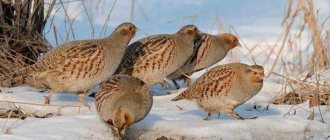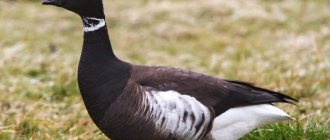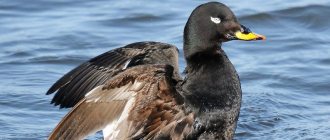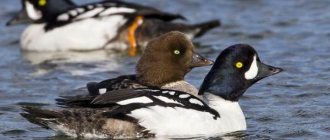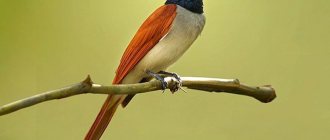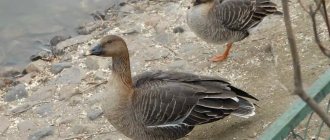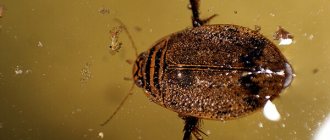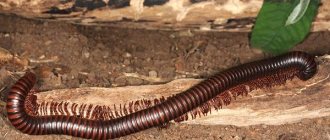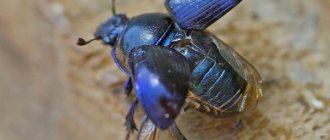- Wild animals
- >>
- Birds
The gray partridge is a small wild bird similar in size to the common domestic chicken. It has a muted gray-blue color with characteristic bright spots and a variegated pattern. This is a very common species of the genus of partridges, having a wide habitat. Wild chickens, as they are often called, have very nutritious and pleasant-tasting meat, which makes them a favorite subject of hunting not only for humans, but also for a large number of wild animals and birds.
Origin of the species and description
Photo: Gray partridge
The gray partridge inhabits all of Eurasia and was even brought to America, where it has taken root very successfully. There are 8 subspecies of this bird, each of which differs in color, size, and ability to reproduce. According to scientists, the gray partridge descended from some species of prehistoric birds. Even Neanderthals hunted them, as evidenced by the results of numerous excavations and serious research. As an independent breed, the gray partridge was isolated several tens of millions of years ago in the territory of Northern Mongolia and Transbaikalia, and since then it has remained virtually unchanged.
Video: Gray partridge
The gray partridge belongs to the pheasant family, order Galliformes. It rarely perches on trees and is therefore considered a ground bird. Despite the large number of people who want to feast on it, the strong influence of weather conditions on the survival of offspring, the harsh wintering without flying to warmer climes, its population remains quite numerous and quickly recovers after an unfavorable period.
Interesting fact: Even world culture has not ignored this gray, inconspicuous bird. The myths of ancient Greece tell about the unseemly act of the proud architect Daedalus, when he threw his student off a cliff. But Athena turned the young man into a gray partridge and he did not crash. According to myths, this is why partridges do not like to fly high, preferring to spend their entire lives on the ground.
It has only two weapons against its enemies: its variegated color, which allows it to get lost in the foliage and the ability to run quickly; only in emergency cases does the gray partridge take off to try to escape from the predator. Considering the high taste and nutritional qualities of its meat, unpretentiousness, the bird is quite successfully raised in captivity, but with a special diet.
Breeding at home
It’s not for nothing that the word partridge means “a bird that looks like a chicken.” These birds tolerate captivity conditions well. Unpretentiousness, coupled with the dietary properties of meat and eggs, stimulates the keeping of partridges on personal plots and on family farms.
The first thing you need to start keeping this bird is a chicken coop or aviary. This simple structure is divided into two parts: a semi-enclosed room with a roof and a walk covered with mesh. The walk should contain fir trees, tufts of grass, sheaves of straw - anything that can imitate natural shelter.
In winter, the birds' diet includes a grain mixture, chopped vegetables, vitamin and mineral supplements, and even minced meat. The partridge gladly pecks the berries of rowan, serviceberry, and viburnum, collected from winter trees.
Closer to spring, in anticipation of egg laying, the partridge menu is enhanced with vitamin supplements, carrots, bone meat and fish meal. It is necessary to add foods containing a lot of calcium, such as chalk.
By April-May, nests are installed in the chicken coop. These are usually old baskets lined with straw. In the middle zone, in the month of May, partridges lay eggs and sit on nests. After 23-26 days the chicks appear. At the end of incubation, the hen and chicks are transferred to a separate cage.
If possible, the brood in the cage is placed outside, among the grass. For the first two days, the chicks are fed egg yolk. After this, the entire family is transferred to a regular diet with an enhanced protein component. After a month, the chicks are returned to the common enclosure. The partridge existed for millennia in close proximity to humans and managed to survive. So she's not as stupid as she seems.
Appearance and features
Photo: Gray partridge bird
The gray partridge has its own quite memorable features, by which it is easy to recognize:
- small body size from 28 to 31 cm, wingspan 45-48 cm, weight from 300 to 450 grams;
- it is characterized by a rounded light gray abdomen with a bright spot in the shape of a horseshoe, a small head with a dark beak, a well-developed back of a gray color with characteristic motley splashes of brown;
- The paws of this species are dark brown, the neck and head are bright, almost orange. The plumage of females is not as elegant as that of males and they are often smaller in size;
- Young individuals have dark and variegated longitudinal stripes on the sides of the body, which disappear as the bird grows.
The main purpose of the variegated color is camouflage. Birds go through a moult every year, which begins first with the flight feathers, then moves on to others and ends completely only towards the end of autumn. Thanks to the density of their plumage and regular molting, partridges are able to live even in snow in moderate frost. The bulk of all individuals living in nature do not make annual flights to warmer regions, but remain to winter in their permanent habitat. In search of food, they dig holes up to 50 meters in length in the snow; during especially cold periods, they gather in them in whole groups, warming each other.
Premises requirements
Home breeding of gray partridge requires the obligatory arrangement of a suitable premises. Its size should correspond to the number of birds kept. So, there should not be more than three of them per square meter. For overnight stays, as a rule, a closed room (barn, log house) is equipped. The floor is covered with straw and all cracks are carefully sealed, since the gray partridge is very sensitive to drafts. It is worth stretching the net under the ceiling, because when flying, the birds can hit the wooden flooring and get injured.
Like all other birds, partridges love fresh air. Therefore, the presence of high enclosures covered with mesh is mandatory. Bushes are placed inside them, sheaves and fir trees are placed, which will serve as a shelter for the birds. In order to be able to hide from bad weather, they make a small canopy, closed on one side. The enclosure should have drinking bowls, feeders, and containers with sand.
Where does the gray partridge live?
Photo: Gray partridge in Russia
The gray-blue partridge is found almost everywhere throughout the southern and central parts of Russia, Altai, Siberia, in many European countries, including Germany, Great Britain, Canada and North America, and western Asia. The natural habitat is considered to be the southern regions of Western Siberia and Kazakhstan.
Her favorite places:
- dense forest, groves, forest edges;
- meadows with thick, tall grass, open areas with islands of bushes, ravines;
- in some cases, gray partridge willingly settles in marshy areas, but chooses dry islands with dense vegetation.
For the most comfortable conditions, she needs space and the presence of a large number of bushes, tall grass, where she can easily hide, build a nest, and also find food. The partridge often settles near fields with oats, buckwheat, and millet. It helps agriculture by pecking harmful insects and various invertebrates that threaten the crop.
Interesting fact: Having chosen a place to live, gray partridges never leave it. Here, throughout their entire lives, they build nests, raise offspring, and feed; in turn, the grown-up chicks will also remain in the same territory.
Now you know where the gray partridge lives. Let's see what she eats.
Number of individuals
Before you start raising this bird, you should decide on the scale - will the matter be limited to personal needs or will the carcasses and eggs be sold. In any case, starting with more than 10 individuals is risky.
If you conduct business, you will have to register so as not to have problems with the tax authorities in the future.
You can get new additions to your enclosure by catching partridges in their habitat or ordering from farmers. Another affordable way is to buy eggs (you will need an incubator to hatch them). You can find out how much a partridge costs by studying the advertisements - prices depend on the species. The average cost of 1 individual chukar is 1 thousand rubles.
What does the gray partridge eat?
Photo: Gray partridge in nature
Adults of this species feed mainly on plant foods: grass, plant seeds, berries, sometimes they supplement the diet with a small proportion of animal food. The growing offspring are fed exclusively on insects, worms, various larvae and spiders; as they grow, they gradually switch to the usual diet for adults.
The birds obtain all their food exclusively in the ground. In winter, the diet becomes very poor; partridges have to tear through the snow with their strong paws to get to wild grass and its seeds. Rabbit holes often help them with this. Sometimes they can feed on winter wheat in agricultural fields, provided that the snow layer is not very heavy.
In particularly difficult winters, which usually come after a rainy summer and autumn with a poor harvest, they tend to move closer to where people live, flying to the feeders of livestock farms in search of stacks of straw, where grains of agricultural plants can easily be found. In spring, mainly succulent parts of plants mixed with insects are eaten. Individuals quickly recover from a hungry winter and are ready to hatch chicks by the beginning of summer.
When raising gray partridge at home, it is not recommended to use regular poultry food. It is necessary to bring it as close as possible to the natural diet, otherwise they may die, refuse to lay eggs and hatch offspring.
Nutrition
Partridges are happy with a vegetarian diet. Grains of cultivated cereals, spring and winter, are an essential part of bird nutrition. Greens, young shoots and roots, and weed seeds supplement the diet. The seeds and fruits of trees, even birch catkins, are actively consumed by birds.
Birds' diet includes insects. They are especially abundant when inspecting plowed fields. In winter, partridge often moves closer to human habitation. On the one hand, the number of threats to her life increases. On the other hand, there are chances to feed themselves near elevators and granaries.
Features of character and lifestyle
Photo: Gray partridges
The gray partridge is considered primarily a ground-dwelling bird. She is able to run quickly and maneuver deftly in tall grass, between trees and bushes. It takes off mainly in the presence of serious danger and at the same time flaps its wings very loudly, flies a short distance low above the ground, and then lands again, misleading the predator. Sometimes it can fly short distances in search of food and at the same time it does not cross the boundaries of its usual territory, but this does not mean that it is not capable of long flights - it is also capable of them.
When running, a wild chicken becomes strictly vertical, raising its head high, and when walking normally, it moves slightly hunched over, looking around the surroundings with a tense look. This is a very shy and quiet bird; you can rarely hear its voice. If only during mating games or during an unexpected attack, when they make a very loud sound, similar to hissing.
During the day, feeding takes partridges only 2-3 hours; the rest of the time they hide in thickets of grass, clean their feathers and listen to all rustles. The most active hours are in the early morning and evening; night is a time for rest.
Interesting fact: From regions with especially snowy winters, with the onset of cold weather, gray partridges head south, since it is impossible to get to food under a thick layer of snow. In other habitats, wild chickens remain for the winter and throughout their lives they carry out only rare flights over short distances in search of food.
Habitats
The distribution range of the gray partridge covers
most of the countries of Eurasia .
In the north these are Norway, Sweden, northern Finland, central and eastern Europe. In the south are Portugal, Italy, Greece and the south of France. Representatives of the species also inhabit the territory of northern Iran, central Turkey and Kazakhstan. In Russia, the northern border begins at the White Sea, runs through the European part of the country, continues in the south of Siberia and ends in Khakassia. The characteristic habitats of the gray partridge are forest clearings with bushes and ravines, forest-steppe and steppe. For this it is also called steppe. In the middle of the 20th century, Hungarian zoological scientists conducted research and found that these representatives of the gallinaceae order spend 35% of their time under the protection of trees and shrubs, 65% in fallow areas of the steppes, and in fields of rye or corn.
Soil properties are very important for gray partridges . Clay soils are unacceptable for them. Birds prefer to settle on well-permeable lands. In the mountains, birds can live on steppe areas of slopes at an altitude of up to 2 thousand meters above sea level.
Social structure and reproduction
Photo: Gray partridge bird
This species of partridge is monogamous. Pairs among wild hens often last a lifetime. Both parents are equally involved in feeding and protecting the offspring. Wild chickens lay eggs once a year at the very beginning of May, from 15 to 25 eggs at a time. Partridge nests are built directly on the ground, hiding them in the grass, under bushes and trees. During incubation, which lasts approximately 23 days, the female only occasionally leaves the clutch to feed; during her absence, the male remains close to the nest and closely monitors the situation around her.
When a predator or other danger appears, they both try to divert all attention to themselves, gradually moving away from the clutch, and then, in the absence of a threat, they return. Males very often die during this period, sacrificing themselves for the safety of their chicks. Despite the high viability of the offspring, in especially rainy years the entire brood may die at once, since the nests are located on the ground. The offspring hatch almost simultaneously and are literally immediately ready to follow their parents across the territory of residence at a distance of up to several hundred meters. The chicks already have plumage, see and hear well, and learn quickly.
Interesting fact: A week after birth, gray partridge chicks are already able to take off, and after a couple of weeks they are ready for long-distance flights with their parents.
Gray partridges are social birds that constantly interact with each other. In the southern regions they live in flocks of 25-30 individuals; in the northern regions, flocks number half as many birds. If one of the parents dies, then the second takes full care of the offspring; if two parents die, the chicks remain in the care of other families of partridges living nearby. In particularly harsh winters, birds gather in close-knit groups and stay close together in small snow dens, since it is easier to stay warm together, and with the onset of a thaw, they scatter again to their secluded places.
Hatching chicks
The partridge begins laying eggs in May. The egg is usually up to 33 mm long, pear-shaped and greenish-brown in color. A nest is prepared in advance from an old basket or tall box measuring 30x30 cm so that the chicks cannot subsequently jump out of it. The bottom is covered with straw or hay. Such a nest should be installed in a dry, ventilated room, where all cracks and openings through which rats, cats or ferrets can enter must be sealed.
The period of incubation of chicks lasts from 21 to 24 days. The chicks are born very independent and immediately begin to explore the world around them, starting to run as soon as they dry off.
Natural enemies of gray partridges
Photo: Pair of gray partridges
Gray partridges have a lot of natural enemies:
- kites, gyrfalcons, owls and other birds of prey, even crows can hunt growing partridges;
- ferrets, foxes, arctic foxes and many other predatory inhabitants of forests and fields.
Due to such an abundance of enemies, a rare partridge lives up to 4 years of age, although under favorable conditions many individuals can live up to 10 years. She has practically nothing to protect herself from predators, except for her camouflage colors. Gray partridge is considered an easy target. That is why the female and the male take such care and protect their offspring. Only thanks to the high fertility and rapid adaptation of the chicks, the population of wild chickens is not in danger of extinction.
In addition to natural enemies, significant damage to the gray partridge population is caused by the active use of various pesticides in agriculture. If a flock lives near a populated area, then even cats and dogs can visit them to profit from young individuals. Hedgehogs easily tear apart nests and feast on eggs. Particularly frosty and snowy winters also cause the death of a large number of partridges. During this period, they are very weakened due to insufficient food and become easy prey for predators.
Immediate family
Many people believe that partridge, quail and hazel grouse are one bird. It's a delusion. In fact, they are all closest relatives to each other, they all belong to the order Galliformes.
The hazel grouse differs from the partridge in that the male has a pronounced crest and a black underside of the head.
Both females and males are more monogamous and nest regardless of their habitat. In terms of lifestyle and external features, they are very similar. The quail is also very similar to its relatives, but is very small in size and is a migratory bird. In the summer-autumn period, they settle in fields with already ripened grains, where they eat, after which they begin their journey. The similarity between partridge eggs and quail eggs is also important. If you take two eggs of these birds, you will notice that the difference between quail eggs is that they have more pronounced and larger brown spots; they are also a little lighter and smaller.
Feed
The compound feed that is given to domestic chickens is not suitable for partridges - if you feed it only, you cannot avoid vitamin deficiency. The diet should include corn, oats, and cake remaining after processing wheat. This bird's digestive system copes better with raw rather than cooked grains.
You can give wet mash to which green herbs are added. To compensate for calcium deficiency, calcium gluconate (chalk) is added to the feed. Finely crushed shell rock will also work. Underfeeding and overfeeding are unacceptable. The average daily caloric intake for an adult in the warm season should be 270-300 kcal. In winter, the norm should be reduced by 90 kcal.

